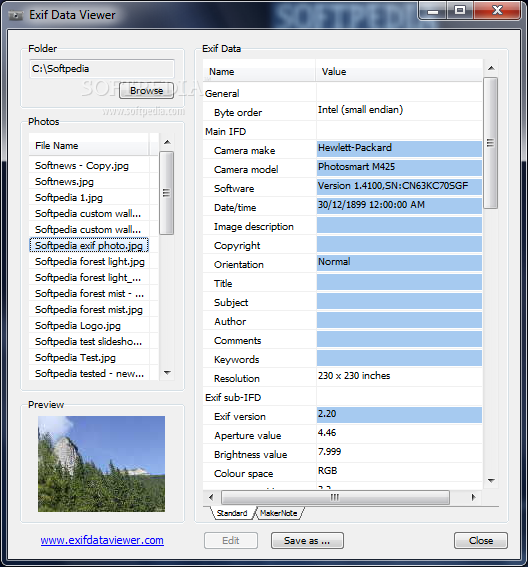
The camera model name that appears on the Camera Settings / Remote Shooting screens of EOS Utility (EU) also shows " EOS Kiss X6i ".
CANON EXIF DATA VIEWER PROFESSIONAL
When using applications, such as Digital Photo Professional (DPP) or Image Browser EX (IBX) to view images captured with your EOS Rebel T4i camera, the camera model name in the EXIF information of the images shows the model name for the same camera in the Japanese market: the EOS Kiss X6i. Even if this occurs, however, the image taken is still captured correctly. I've considered picking a handful of hot pixels and using them as "thermometer pixels" to derive the actual zero point of the exposure instead of the average-darksignal-corrected zero point, but that was pushing it a bit too far I thought.We have indentified a phenomenon in which the camera model name embedded in the EXIF data of captured images incorrectly shows " EOS Kiss X6i ", which is the model name for the EOS Rebel T4i in the Japanese market. So actually using the sensor temperature for dark current prediction and correction doesn't work as good as I'd hoped. 1024 binary units average signal (the value depends on the camera model, but is a nice power of 2). No matter what the exposure time or temperature, for the typical bulk of the pixels (excluding the warm and hot pixels), the RAW of a dark will always have e.g. The tricky thing with Canon RAW files is that they have a built-in average dark signal correction before the RAW is compiled. I've looked at the individual pixels in detail, each as function of temperature, and see the "expected" behaviour: an exponential increase with temperature.
CANON EXIF DATA VIEWER SERIES
When taking a long series of long exposure darks I see a clear increase in temperature and corresponding dark current (shows up as noise but is more a fixed pattern).

With intensive use (many read-outs in short time) the sensor will heat up a lot, with long exposure times it heats up slower and levels off to a temperature closer to the outside temperature. The temperature seems to be a reasonable representation of the real temperature, I've done test in the fridge and freezer to make temperature dependent darks.

GreetingsĪ few personal observations on Canon DSLRs and temperatures. It's in Spanish, but I'm sure Google helps with the translation. Link to the brico: Reflex active Cooling - Brico It is not as effective as an integrated cooling, but I am using it and I have temperature reductions of 10 to 12ºc in comparison if I do not mount any refrigeration, the truth is that it shows a lot in the reduction of thermal noise during a session and the longer the more It is appreciated.Īs I say It is not about cooling a Reflex what it does is that it does not get hot. etc) must not be disassembled and one camera can be passed to another if there is a change of team.

Hello: The heating of the Reflex during the taking of photos especially those of long duration> 120sec is a problem that is only solved with active cooling, but it is complicated and you have to disassemble the camera, you have to resort to experts.įor those who may be interested, I have developed a cooling solution that is easy to install, is suitable for any model, the Reflex (Canon, Nikon.


 0 kommentar(er)
0 kommentar(er)
